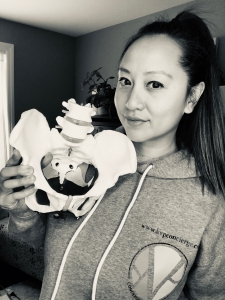

4/23/2022
A lot of women complain of pain with sexual activities. Sometimes it can start during pregnancy. Sometimes it can start postpartum. Sometimes it can seem like it started out of nowhere. There are many terms that all lead to the symptom of having pain in your pelvic area during intercourse. Your medical doctor may diagnose you with vulvodynia, dyspareunia, vestibulitus, vaginismus, or with a hypertonic pelvic floor.
The descriptions of the pain can include sharp pain, throbbing, tightness, “hitting a wall”, and many others. Pain can also be associated with having an internal medical exam or inserting a tampon or wearing very tight pants. The pain does not necessarily only happen during intercourse.
Many times, women will receive not-so-helpful advice on how to improve their symptoms. A lot of our patients have heard the following from their doctor:
“Just relax”
“Take a warm bath and drink wine”
”It is all in your head”
”There isn’t anything you can do until you have had a vaginal birth to stretch the vaginal canal”
We have heard some craaazy things.
Did you know pelvic floor physical therapy can help? A lot of times there is a muscular component to the pain. Learning how to engage and disengage your pelvic floor correctly can help decrease, and even eliminate pain with sexual activities.
If you cannot see a pelvic floor therapist right away, here are some things you can try to figure out:
1. Try being aware of what you are actually feeling when you are in pain.
2. Do you have pelvic pain or tightness during any other time in the day or night besides during intimate moments?
3. How would you describe the pain?
4. Are there positions that make the pain better or worse?
Answers to these questions can greatly help your pelvic floor therapist give you better interventions to help you. Also, being more mindful about your symptoms can make the daunting symptoms feel less daunting.
If you have any questions about painful sex, send us a question here !
Contributed by: Dr. Katherine Pace


